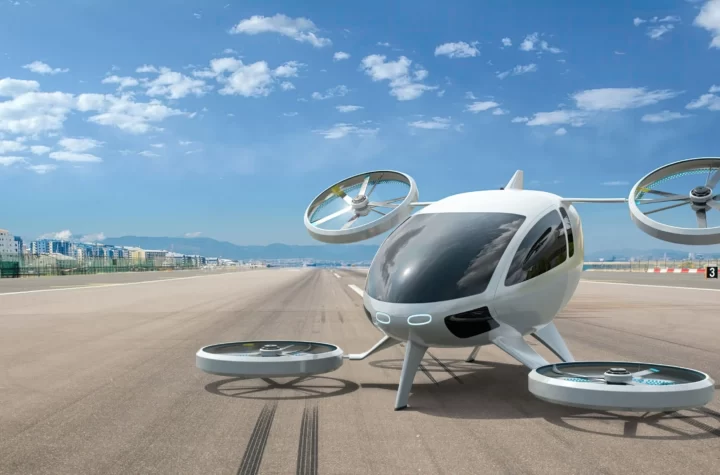Telematics. Every car has got a bunch of it, but aside from in-car video and satellite radio, most of it is buried in safety systems that most drivers hope they never have to use and few are willing to pony up real cash to own.
 |
| A new electronic architecture will make all International trucks come ‘wireless ready’ allowing fleet owners to monitor the trucks vital signs and the company’s drivers. |
International Truck is not only making a business case for telematics, they’re making telematics into a business solution.
Three years ago International began development of its next generation large truck.
Working from a clean sheet of paper, designers and engineers created a new architecture built on a multiplex platform.
Mark Schumacher, marketing manager, Truck Electronics says that the initial goal was to reduce vehicle wiring count by about 40 percent. But as an added benefit, engineers found that they could utilize the LAN architecture to get all of the systems and components on the vehicle to communicate with each other. “It really created a wealth of information for us,” Schumacher says.
But the true potential of this new electric architecture was yet to be discovered. “Every time we sell a commercial truck,” Schumacher continues, “we’re usually adding some kind of equipment to it — whether it will be fixing utility poles, towing trucks or putting out fires. We realized that we could use this architecture to not only talk to the chassis equipment but to the body equipment as well. We worked really hard to integrate the whole system as one — the whole truck as one electrical system.”
With the new truck now gathering all of this information on board, International started to investigate the possibility of transmitting the information from the truck to people who could use it to manage their fleets better. Enter IBM, a company that has done extensive research and development in enabling companies like International to do just that.
“We started with them from the very beginning,” says James S. Ruthven, program director, IBM Telematics Solutions. “We consulted with them on whether or not they should enter this business and if they enter this business, how. They were good enough to give us the business to help them architect the solution. They allowed us to do some of the implementation work and develop some of the applications ourselves.”
The result is a tool that allows the wireless delivery of real-time vehicle operating data to fleet managers and technicians. All of the data is available via the internet allowing for the information to be accessed from anywhere in the world.
“Put yourself in the shoes of a fleet manager,” Schumacher says, “Maybe you have 50 to 100 delivery trucks. Everyday your drivers show up to work and take your trucks off the yard and you lose visibility of your whole operation. You don’t know where they are, you don’t know where they’ve been. You don’t know if they’re meeting commitments, if the trucks are working.”
International, who will have the system built into its trucks by the end of this year or early 2005, is currently launching an aftermarket version that cannot only be retrofitted to International vehicles but other marques as well. “We really see this as a fleet solution,” Schumacher says, “and you don’t get the full advantage when you only outfit the 10 or 20 percent of the fleet that you turn over. We really see this affecting the entire fleet, that’s when you start managing your business differently.” Schumacher says that the system’s functions have been divided into three sections.
 |
| The system not only monitors the vital signs of the chassis but can monitor body systems like this refrigeration unit. |
The system can also set geo-fences or virtual boundaries. When the vehicles cross any geographic boundary the fleet manager is instantly notified.
Any vehicle over 26,000 lb. must report the fuel used in each state for tax purposes. “That can be an administration nightmare,” Schumacher says, “We’ve seen outfits that have people employed full time (for this purpose).”
International has partnered with an outside firm to provide this service. They will supply location data (how many miles are driven in how many states) and the vendor will compile the fuel information (number of purchases and how many gallons were bought) and calculate how much fuel was burned in each state.
“The interesting element,” says IBM’s Ruthven, “is that you’re now measuring miles driven as opposed to fuel used. There’s a difference in the taxation perspective on fuel used while idling, for example to keep the cab warm or use one of the attachments, than fuel used while you’re driving. Fuel is obviously the most significant cost of the unit,” he continues. “Differentiating between the two results is cost savings for the fleet manager.”
The third piece of the system is what International calls a vehicle health suite of features.
International can constantly monitor the vital signs of the vehicle, things like the battery state of charge, odometer readings, fuel levels and brake depressions, avoiding the chance of a small mechanical problem turning into a big one.
“If a problem happens we can know about it immediately,” Schumacher says, “send a cell phone message to the fleet manager such as, ‘We’ve got truck 17 with a low oil pressure situation. Let’s jump on this right away before this truck does another hundred miles and is sitting there with a blown engine and a $6,000 repair bill.’” And International’s system goes beyond just chassis diagnostics to monitoring body systems like refrigeration units or pumping systems on fire trucks.
“Prognostics are really going to help us with the vehicle health needs,” says William R. Fleming, engineering program manager Truck Group Electronics. “We think it’s going to be a great differentiator for our products vs. the competition.”
Fleming feels that the OEMs have the best chance of getting the vehicle health needs right. International is hard at work on programs that will monitor brakes, tires and filters, available four months after the July launch. “One of the big downtime issues is plugged fuel and air filters,” Fleming says. “We’re going to really try to hit the real causes of downtime.” A tire monitoring system will not only keep track of tire pressure but tire temperature as well, allowing engineers to build profiles on how tires are being used.
“Eventually,” says Fleming, “once we have the data and have had enough time to sift through it, we’ll be able to predict the life of the tires. And predict when they’ll need to change them.” A brake monitoring feature will measure brake pad wear, check for adjustment and air leakage — a major concern with air brakes. Also on the drawing board are plans to capture data on fluids, like automatic transmission fluid, engine oil and engine coolant and try to model how long these fluids last by different applications. Fleming sees great potential for improving product development. Engineers can now see how vehicles are used throughout their life cycle from product planning all the way through liability and warranty issues.
“Our product development engineers have traditionally had a big gripe about the data we get back about failures,” Fleming says. “Generally, they’ll get a lot of information about how the vehicle was configured and we get a lot of back-end information. You don’t really get any information about how the vehicle was being used and what led it to the failure.
“Now we’ll be able to look at the profile that led up to this failure and help us understand that maybe in this application, we need to spec a bigger part or something that’s more robust. It’s going to be a very powerful tool for product development. Telematics is going to give us that edge of being able to gather databases full of information to be able to help our customers.”
For instance, Schumacher says that many customers have been asking them what telematics can do to help with fuel costs. The data can be used to monitor driver behavior instructing individual drivers on how they can change their driving style to improve fuel economy.
Erich Nickel, director of global telematics Solutions for IBM says he is working with a company in Europe that is investigating what kind of cost savings could be realized in leveraging telematics in all aspects of the business, reducing downtime, fuel optimization and the whole logistic chain from managing goods to insuring them. “They came up with a potential savings of 20 to 30 percent.
“And you may be looking at only 30 to 40 percent of the potential,” says Nickel, “so there’s room for much more.”














































 Saab-aru Sport Wagon
Saab-aru Sport Wagon


